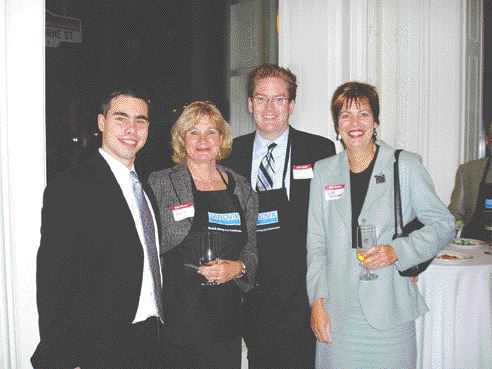The Northern Miner asked Paul van Eeden, a noted analyst and newsletter writer who has written extensively on the price of gold, to pick three mining stocks that could be on the climb, but might be missed by the average investor.
Van Eeden, who also contributes a weekly article to precious metal dealer Kitco Inc.’s website, and offers investment advice to subscribers through www.paulvaneeden.com, obliged, offering up some of the hidden gems of the junior mining exploration sector.
Esperanza Silver
The deal gives each company a 50% interest in any project resulting from their efforts, which, van Eeden says, gives Esperanza shareholders some leverage.
Perhaps the best part of the deal, he says, is the stipulation that Silver Standard can earn an 80% interest in any project by financing it to production.
That scenario would leave Esperanza with a 20% carried interest for contributing almost nothing.
Esperanza chief executive William Pincus explains that while his company must put up an initial $700,000 to Silver Standard’s $800,000, capital costs after that would be covered entirely by Silver Standard.
“That’s the kind of exploration business I like to own,” van Eeden says. “One that uses its own intellectual capital and someone else’s financial capital to create value for shareholders.”
While Pincus enjoys such praise, he acknowledges that not everyone is pleased with the deal. From another perspective, it leaves Esperanza with only 20% of the deposit.
Channel samples from the outcrops at San Luis look good — gold and silver mineralization has a weighted average grade of 31 grams gold per tonne and 830 grams silver per tonne. But van Eeden cautions not to read too much into channel samples, especially if one hasn’t visited the project — and he hasn’t.
Still, van Eeden says exploration is off to a good start and drilling is slated to begin early next year.
Meanwhile, the second phase of drilling is about to begin on Esperanza’s namesake property in Mexico. A drill rig is scheduled to arrive soon for a 3,500-metre drilling campaign.
Esperanza shares have gained roughly 100% since late August and were trading at 75 in Toronto on Nov. 21 compared with 38 just over two months ago.
Mirasol Resources
Van Eeden’s next pick,
“When it comes to these small exploration companies, the core of my investment philosophy is to invest in people,” van Eeden says.
He bought into the then-private company last year when he heard good things about Mirasol’s president and chief executive, Mary Little.
But it isn’t only the people of Mirasol that have impressed van Eeden. He also points to the company’s use of ASTER mineral mapping — a system rarely employed on as small a scale as Mirasol is using it. Van Eeden says ASTER is likely the best technology for satellite mapping, and Mirasol has effectively used it to discover potential sites.
Mirasol combined its geochemical database and detailed structural analysis with results from ASTER to delineate eight exploration targets, all in the Santa Cruz province of Argentina. Those properties cover more that 850 sq. km, which haven’t been subject to artisanal mining.
“Most exploration companies just trade old projects among each other and hope that they’ll find something others have missed,” van Eeden says. “There are very few companies that have the ability to come up with new projects.”
He also likes Mirasol’s business strategy, which is to focus on project generation. He says joint-venture partners will likely come in once exploration starts.
“This is outright the most intelligent strategy for small exploration companies,” Van Eeden says. “While it is still very early days for Mirasol, I have high hopes for the company.”
Tracy Hurley, a spokesperson for Mirasol, says the junior is focusing on five properties. The most advanced is the Sascha project, a 4.5-km fault system where surface sampling has returned intermittently high grades of gold near surface. Mirasol has plans to begin a 1,000-metre first phase of diamond drilling.
Mirasol’s shares closed at 39 in Toronto on Nov. 21 — down from a 52-week high of 56 reached in late August.
Grayd Resources
Van Eeden’s third pick would do well to let its connection to
The American major agreed to put in $7 million over four years to earn a 51% stake in
Van Eeden’s bullishness on Grayd is largely built on Newmont’s due diligence with regards to the La India site.
In just three months, Newmont mapped the property, took 735 surface samples, completed 1,000 line-km of airborne geophysics and 20 line-km of ground geophysics.
“It amounts to what some companies achieve during a full year of exploration,” van Eeden says.
La India is geologically similar to Newmont’s Yanacocha mine in Peru, which may explain Newmont’s interest in the project, says van Eeden; both are Tertiary-aged, volcanic-hosted epithermal deposits, with high sulphidation.
While Newmont only owns 51% of Yanacocha, it’s the company’s largest cash-flow generator.
“It is much too soon to know if La India is going to turn up anything interesting,” van Eeden says. “But if Newmont is prepared to spend as much as they are . . . then I’m prepared to take a shot as well.”
Grayd’s president and chief executive, Marc Prefontaine, says more extensive drilling will begin at the end of November. Newmont is funding 3,000 metres of drilling at a cost of $1 million.
Grayd’s shares closed at 27 on Nov. 21. In the last six months it has traded between 13 and 30.


Be the first to comment on "Van Eeden picks three (November 28, 2005)"